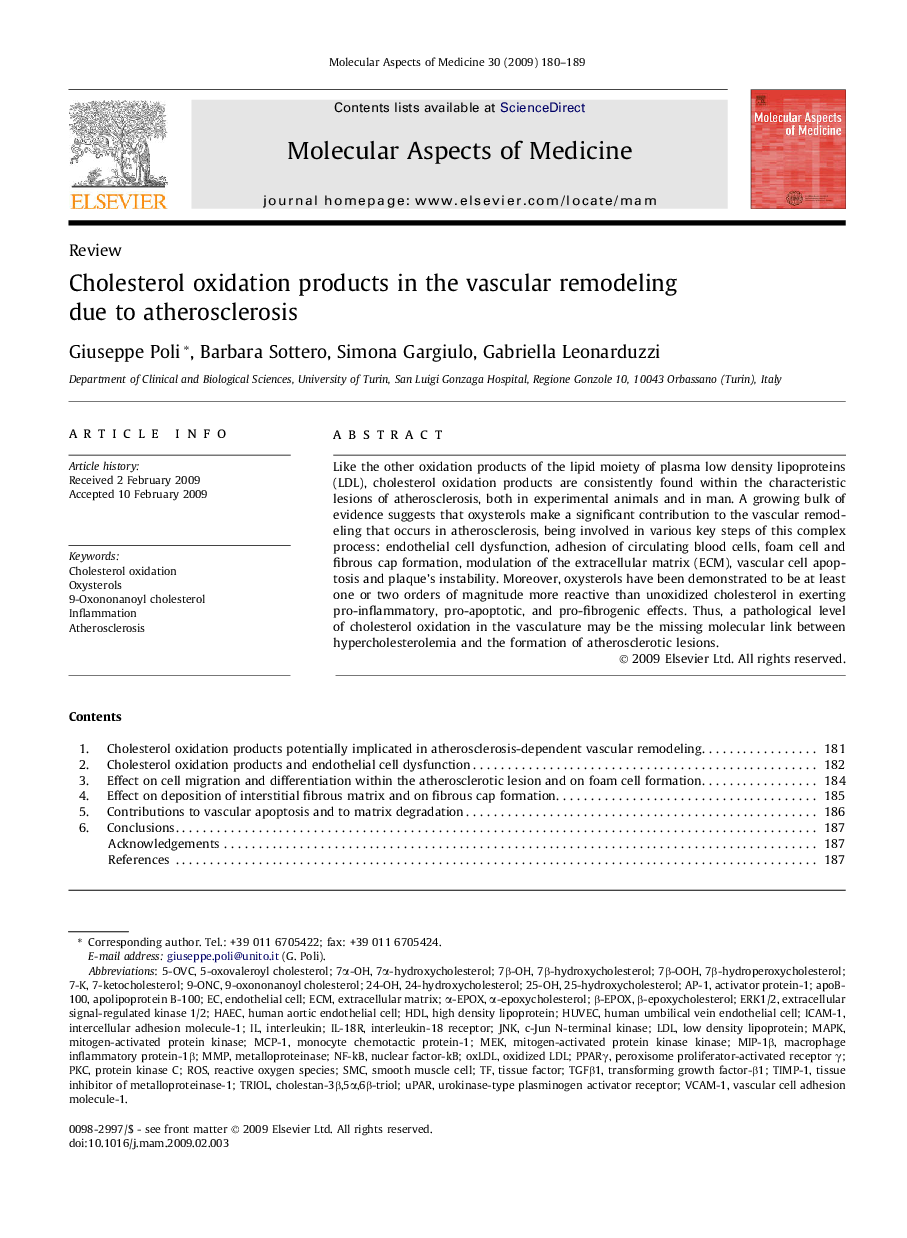| Article ID | Journal | Published Year | Pages | File Type |
|---|---|---|---|---|
| 1995918 | Molecular Aspects of Medicine | 2009 | 10 Pages |
Like the other oxidation products of the lipid moiety of plasma low density lipoproteins (LDL), cholesterol oxidation products are consistently found within the characteristic lesions of atherosclerosis, both in experimental animals and in man. A growing bulk of evidence suggests that oxysterols make a significant contribution to the vascular remodeling that occurs in atherosclerosis, being involved in various key steps of this complex process: endothelial cell dysfunction, adhesion of circulating blood cells, foam cell and fibrous cap formation, modulation of the extracellular matrix (ECM), vascular cell apoptosis and plaque’s instability. Moreover, oxysterols have been demonstrated to be at least one or two orders of magnitude more reactive than unoxidized cholesterol in exerting pro-inflammatory, pro-apoptotic, and pro-fibrogenic effects. Thus, a pathological level of cholesterol oxidation in the vasculature may be the missing molecular link between hypercholesterolemia and the formation of atherosclerotic lesions.
